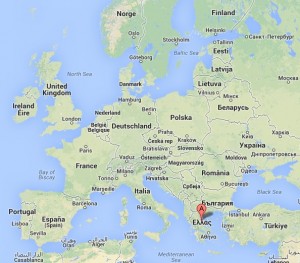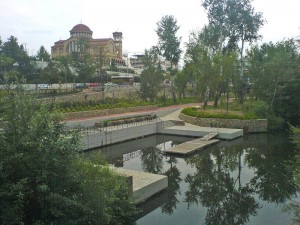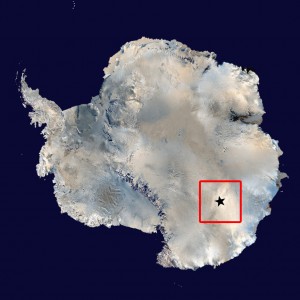The first blog entry by the next ESA-sponsored medical doctor to visit Concordia. Leaving soon on his Antarctic adventure Adrian Golemis introduces himself and his destination:
Morale: Excellent
Χαίρετε!
My name is Adrianos Golemis and I come from the city of Larisa in Greece (39° 39′ N, 22° 25′ E). I was recently appointed as the next ESA research Medical Doctor at Concordia Station, Antarctica (75° 6′ S, 123° 20′ E). This is my first entry for the Concordia blog, a record of our adventure in Antarctica similar to a ship’s journal or an expedition diary. Although we are now nearing our departure for Concordia, this log will start at the beginning when I was selected in June 2013 and introducing the little station that will host 13 people next year.
Concordia Base is a Franco-Italian research station in the heart of the Antarctic continent, located at Dome C – also called Charlie or Dome Circe after the sorceress that ensnared Ulysses’ companions in Homer’s Odyssey. Dome Circe is one of the coldest and most desolate places on the Earth. Due to the extreme conditions it looks like a totally different world.
Concordia is very remote. Situated at a distance of ~1100 km from the coastal French station Dumont D’ Urville and around 600 km from the Russian station Vostok, Concordia is only accessible during the summer months. This makes emergencies hard to deal with and Concordia needs to be autonomous. During the Antarctic winter the base is impossible to reach, which makes life more adventurous than the astronauts on the International Space Station.
This is not the only challenge that people face at Dome Circe. The Antarctic plateau is so dry that it can disrupt sleep and be harmful to human tissue, although the conditions are ideal for astronomical observations. Concordia is located 3200 m above sea level, equivalent to 3600 m at medium latitudes such as Europe or 4000 m at the equator. This has severe implications to sleeping patterns and robs people off their physical strength until they adapt to the altitude. Like all places in the Antarctic Circle, Concordia experiences continuous night during the winter, with complete absence of light for several months.
Needless to say, the temperatures are extremely low, ranging from a staggering -80˚C to a heart-lifting -10˚C! But what can be equally daunting at Concordia is the complete absence of external stimuli. Gazing out of the Station’s windows, one can only behold a sea of white. No animals live there and weather phenomena are a rarity. The landscape is pretty mundane, adding to the monotony, with the only man-made features on the plateau.
The last trial to overcome is the confinement. For an entire year the Concordia crew is unable to leave the station and reach the outer world. Due to the extreme frost the crew is limited to staying within a small radius of 1 km around the base during the long Antarctic winter while taking extreme precautions.
In fact, a year’s stay at Concordia, this little bubble of life amidst the infinite white of Dome C is not that different to the experience astronauts have to face when humanity reaches another planet. It is the environmental conditions that makes Concordia a great space analogue and offers us a unique chance to study human performance and adaptation in extreme environments.
The European Space Agency supports a Medical Doctor each year to conduct physiological and psychological research at Concordia, gaining knowledge that will help future pioneers take their first step on Mars and beyond.
This year the lucky one to go is me. “Lucky” might sound a bit funny to your ears if you consider that we are about to travel to the infinite white desolation that is Dome Circe. But there are great returns to be discovered in such a journey, and after giving it much thought, I yearn to go.
[youtube f2NomBQPT1U]
Indeed we are outward bound and excited about it (as the melody suggests). Through this blog I invite you to share the experience of six French, six Italians (one of Russian origin) and one Greek, more correctly, thirteen Europeans, or better yet, thirteen people from Earth.

StarWing. Credits: Nintendo
The title of this principal entry in the logbook comes from one of the very first thoughts that crossed my mind when I heard about the Antarctic base of Concordia. In my youth, one of my favourite video games was StarWing. In this game you assume control of a small starfighter and try to battle the forces of evil in the galaxy. The game starts at a safe haven called “Corneria: The Base” where the hero Fox McCloud lives. I can still picture the red title letters filling the screen of our old television set as my brother and I got ready for a virtual adventure on Saturday mornings. Now, on the eve of another, more genuine adventure, I couldn’t help but notice the resemblance in the name – and its function. Like Corneria, “Concordia: The Base”, will be our refuge for one year, an enclave of biosphere that persists against nature’s most brutal forces.
I hope you enjoy the journey.
҉
Adrian Golemis







Discussion: 8 comments
Have a nice stay at Concordia,Adrianos!!!
Hello Adrian.
We’re looking forward your adventure.
Best regards.
Jeremy
Good luck. 🙂
PS: refuge, not refugee
Dear ggg 😉
as editor for this blog that was my mistake, thanks for spotting!
Best greetings from Athens (and Larisa)! Πολλά χαιρετίσματα και όλα με το καλό στην Ανταρκτική!
Γεια σας Adrian,
I am working on a Antarctica project on the South Shetland islands and would like to involve a Greek scientist as part of our collaboration. Could we communicate by email, and you could explain to me what is required for Greek nationals as I believe Greece is not part of the Antarctic Treaty as a country. As it is rare having Greek visitors in Antarctica, you may be the right person to help me further. Enjoy the special place of last solitude on earth and good luck with your pursuits. I was last November there. Best regards, Sven
Good evening, thank you very much for your interest. The South Shetlands must be great and probably blessed with more Auroras than us here! Greece is actually a member of the Antarctic Treaty since 1987, but i would be happy to discuss further and help if i can. I am also in touch with other Greeks who have been in Antarctica. Could you reach me at adrianos.golemis@concordiastation.aq ? If i don’t respond in a day it means that due to internet problems i have not received your e-mail, so please write again here!
One of the more abstruse credits for Barney Bubbles appeared just as he was embarking on his career in music design.